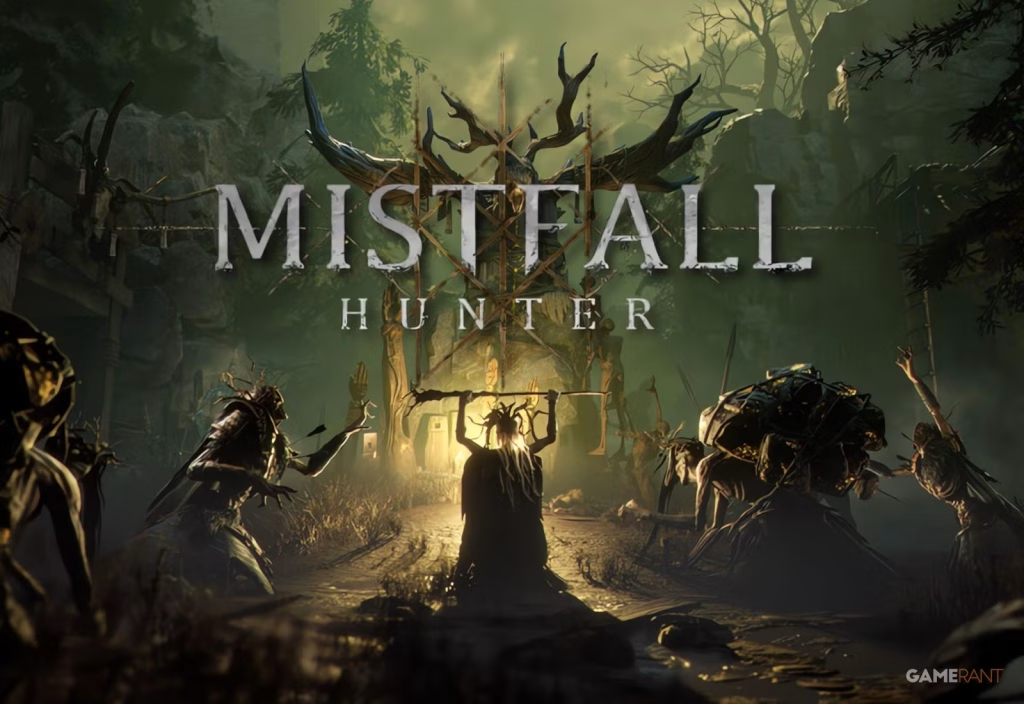Mistfall Hunter is a third person action extraction RPG with PvPvE tension and build driven combat. The project is currently moving through public playtests, and its store listings point to a planned 2025 release window. The core fantasy, as described by the studio, places you in a dark fantasy ruin where steel and magic meet and every run risks your hard earned haul.
This feature gathers every on record detail from official sources into one place, then expands the context for clarity and smooth reading. You will find story framing, systems and class pillars, platforms and status, and PC requirements. For a concise first look that comes straight from the team, start with the Official game page, which outlines the world and the extraction loop as it stands today. You can explore the broad overview on the Official game page.
Developer and publisher on record
Mistfall Hunter is developed by Bellring Games. On Steam, the publisher is listed as Skystone Games, with Bellring Games as the developer. Those details appear on the product header and the About section of the Steam listing. Meanwhile, the Xbox store page lists Bellring Games as both developer and publisher. Source pages reflect platform specific arrangements, so this guide reports the names exactly as they appear on each official listing.
Across official descriptions, the team positions the game as a dark fantasy action extraction experience where fast, precise combat feeds a high stakes loop. The studio highlights class variety, build expression through skills and talents, and a tight focus on risk versus reward. The message leans on clarity: prepare in camp, fight through the Gyldenmist, and extract if you want to keep your spoils.
Platforms, release state, and availability
As of this update, Mistfall Hunter is listed for PC on Steam with a planned 2025 release window and an active Steam Playtest flow. The listing notes Online PvP and Online Co op features and allows players to request playtest access. The Steam store page functions as the primary PC listing and includes a trailer block, media, and a language table. You can view all current PC details on the Steam page.
In addition, an official Xbox listing indicates availability for Xbox Series X|S and PC within the Microsoft ecosystem. The page describes the same core pitch and class driven combat, and it frames the experience as an action RPG that blends with extraction style PvPvE design. For console and Microsoft Store details, check the Xbox store page.
No price is posted on the Steam listing at the time of writing. The product is not yet available for purchase on Steam, and playtest access is granted through the Steam Playtest system when the developer opens slots. Likewise, the Xbox listing does not present price or purchase options as of now.
Story premise and world overview
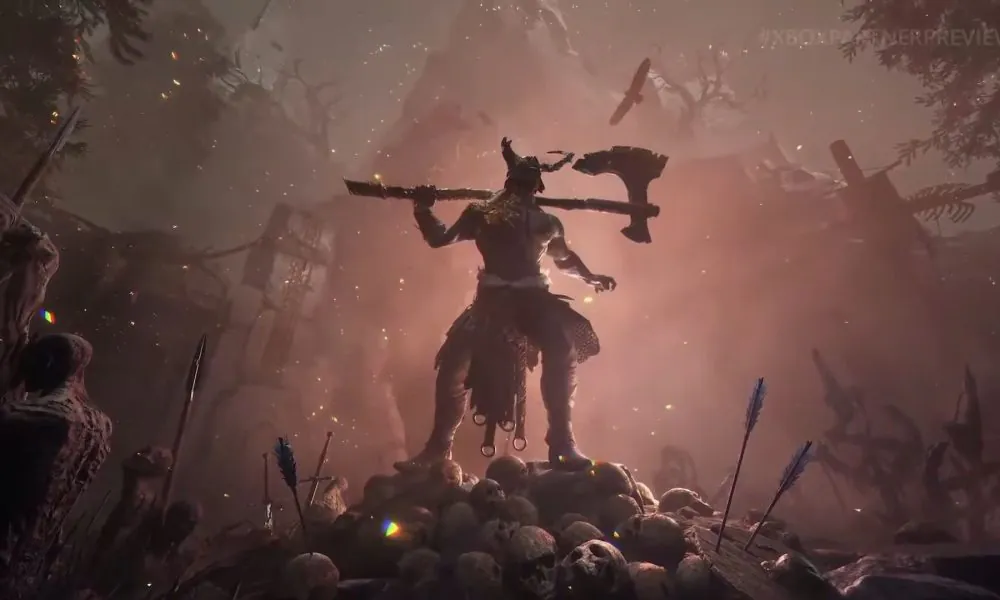
The official story places the game in the aftermath of a catastrophic war between gods and outer gods. In that ruin, the blood of the fallen deities became the Gyldenmist, a spreading force of corruption that drives mortals to madness and mutation. Civilization broke under that pressure, yet a fragment of the Fate Goddess endures as a figure named Dew.
Dew resurrects fallen heroes and grants them immortal bodies, sending them back into the Gyldenmist to collect precious resources and mend the shattered web of fate. As a reborn warrior, you descend into zones choked by the mist, clash with warped creatures, fend off rival hunters, and attempt to escape with everything you can carry. The tone blends grim survival with defiant resolve, and the framing reinforces that your missions serve a larger purpose tied to Dew and the fate of the world.
Core loop and structure
Each run follows a clean structure that the studio repeats across official copy and trailers. You prepare in camp, you enter the mist, you fight for resources, and you extract. However, the extraction is not guaranteed. If you fall, you lose the loot you earned in that incursion.
A typical loop includes the following beats:
- Prepare your class build, weapons, and skills in camp.
- Enter a Gyldenmist infested location and engage enemies and rivals.
- Collect Gyldenblod and other loot as you progress through objectives.
- Locate a path to extraction and secure your way out to keep your haul.
Extraction has an extra twist that defines the game’s identity. To leave with your spoils, you must locate and defeat a rare enemy called the Returner Woodling. That fight yields a Soul of Return, which enables you to find your way home. Consequently, every run has a late objective that raises the stakes, since your inventory is on the line until you complete extraction.
Combat, abilities, and movement
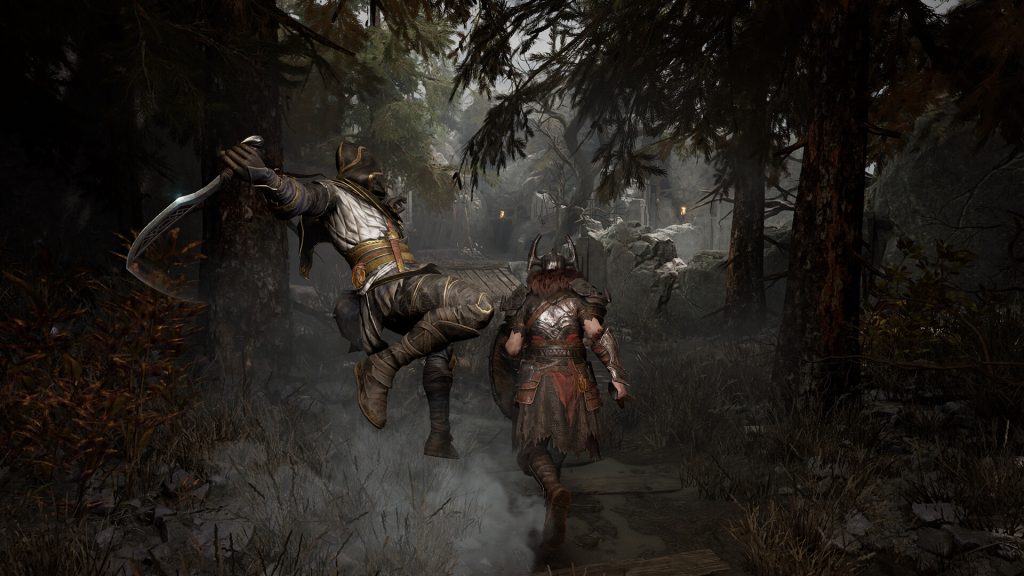
Combat is third person, fast, and readable. The Steam page highlights a precision aiming system that adds a skill forward layer to action play. You chain combos, target weak points, and coordinate with teammates to overwhelm bosses and rival squads. Meanwhile, classes combine steel and magic, and you can swap weapons during battles to adapt on the fly.
The team frames mobility as part of a fluid style rather than a separate system. You attack, weave, and reposition as you set up aim assisted weak point shots. Therefore, micro decisions stack quickly, and a missed window costs health or time. Notably, that pace pairs with class abilities and cooldown driven skills, which you pick from a pool to build your loadout.
Progression layers
Progression sits across interlocking layers. First, you select a class. Then, you shape a build from skills and talents, and you chase gear that supports your plan. The official copy references over ten skills and various talents per class, along with passives and affixes that you can upgrade. As you earn higher level equipment, you refine affixes and push your chosen playstyle.
Because the loop depends on extracting with your haul, build growth is tied to successful runs. You return to camp with materials, apply upgrades, and set your next mission based on what you need to craft or improve. Consequently, risk management matters. If you overreach and fall, you set yourself back and must retool and try again.
Weapons, tools, and crafting
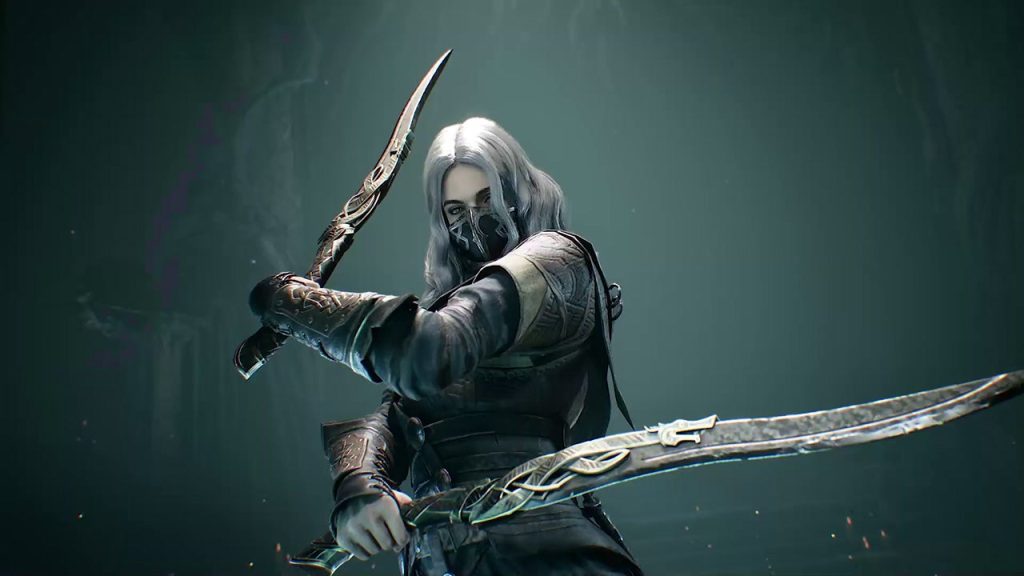
Weapon families align with class kits and the steel plus magic theme. The studio encourages swapping between two weapons or styles in combat, which supports flexible counters and combo setups. Gear comes with affixes that can be improved, and passives deepen the identity of your chosen path. The official material does not detail crafting recipes, repair rules, or durability. Therefore, this guide limits itself to the on record language around collecting high level gear and upgrading affixes.
When a build clicks, combat showcases clear weapons plus skill synergy. You open with a ranged pick at a weak point, slide into a crowd control skill, and finish with a heavy follow up. Similarly, a melee focused approach can lean on buffs and passives to keep pressure on elite targets, while a ranged kit plays at distance and calls out team focus fire.
Areas, enemies, and boss design
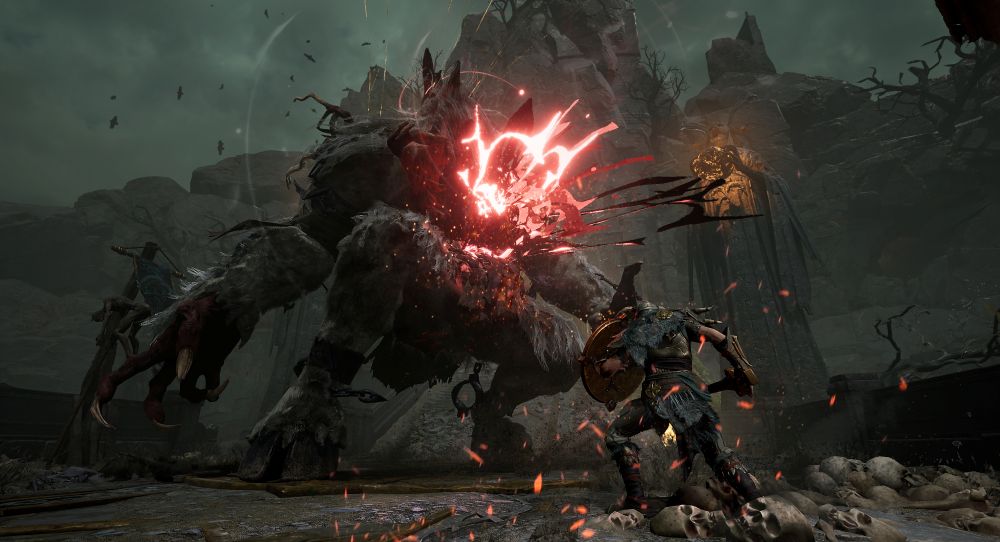
The setting points to ruined biomes soaked in Gyldenmist and dotted with fortified pockets of life. Official descriptions name the Corroded as a key enemy family and the Mist Lords as terrifying apex threats. Those forces guard treasure and resources, and they populate zones alongside rival Gyldhunters who hunt for the same rewards.
The developer’s public update flow also names individual boss encounters during the current test phase. In Steam posts, the team calls out General Harald as a featured Mist Lord tier fight in a recent build, which fits the grim myth within the world and illustrates how signature bosses anchor runs during tests. Details like placement and mechanics may shift as playtests evolve, yet the boss label and role are stated on record.
Modes and multiplayer
Solo and trio modes are highlighted across official channels. The Steam listing confirms Online PvP and Online Co op, and the pitch reinforces that you can go alone or team up with up to two companions. Because extraction is contested and loot is on the line, teams coordinate class picks and tactics to cover strengths and weaknesses.
During public tests, the team has used Steam announcements to define specific mode settings, including difficulty selections within solo and trio. Those notes provide structure for test feedback and reflect the project’s focus on both individual mastery and small squad synergy.
You can review the latest playtest notes and developer posts on the Patch notes hub, which gathers Steam announcements, FAQs, and test timing in one place.
Economy and vendors
Official pages emphasize Gyldenblod and loot as the primary targets during runs, with extraction required to bank progress. The site and store listings stop short of detailing named currencies, vendor types, or crafting stations in a granular way. As such, this guide stays with the phrasing the studio uses: the ruins are rich with treasure, enemies guard the good stuff, and death costs you your current haul. In early test notes, camp preparation is a recurring theme, and that is where you set up builds, gear, and next objectives before returning to the mist.
Accessibility and localization
The Steam listing provides a language table that includes English with full audio and subtitles, along with interface and subtitle support across multiple languages, including Simplified Chinese, Spanish, Russian, Japanese, Traditional Chinese, Spanish Latin America, Korean, French, German, and Portuguese Portugal. The page does not enumerate accessibility features such as font scaling, colorblind modes, text to speech, or control remapping settings. Therefore, this guide reflects languages only and will update when the developer posts a fuller accessibility sheet.
Performance settings and PC options
The official store page does not list performance targets, renderer options, or PC upscalers. It does frame the game as a smooth third person action experience, and it indicates controller friendly combat in tone, but the current beta FAQ on Steam notes that controllers are not supported during this test phase. Keyboard and mouse are therefore the way to play the Steam Playtest right now. The developer states that controller support is in development and will arrive in a future version.
System requirements
The Steam page currently lists the following minimum PC requirements. The listing does not show a recommended spec at this time.
Minimum:
- OS: Windows 10 64 bit
- Memory: 16 GB RAM
- Graphics: NVIDIA GTX 1660 or AMD Radeon RX 6500 XT
- DirectX: Version 12
- Network: Broadband Internet connection
If Steam Deck or controller notes appear later on the store page, those will be added here. As of this update, the page focuses on desktop Windows requirements and online connectivity.
Content in the current phase

The team is conducting structured playtests through Steam. Recent announcements describe Solo and Trio modes with difficulty options inside each mode during a given beta window. Those posts also call out featured bosses and systems under review in the build, which gives players a clear target for testing. Content and balance may change from test to test, and the developer labels these changes in Steam updates to set expectations.
Meanwhile, the official site and store listings lock the framing. You explore Gyldenmist laden ruins, you fight Corroded creatures and Mist Lords, and you attempt to extract with resources that fuel your progress. Because the build is not final, the studio keeps specifics flexible and uses playtest threads to share concise lists of additions and adjustments.
Update history and hotfixes
During this cycle, the developer publishes timing and notes through their Steam presence. The community hub includes a recent playtest date announcement, a launch note for that test, and a beta FAQ that breaks down mode structure, language support, and input status. Those posts also mention a boss fight and a system under evaluation, signaling what the team wants players to try.
For a single place to scan these notes and date stamps, rely on the Steam community feed for the app. That hub holds developer news posts, FAQ threads, and event timing. Since patch notes live there between test builds, it functions as the practical patch notes hub for now. You can find those details on the Patch notes hub.
Roadmap and developer priorities
There is no separate public roadmap page linked from the site or store listings at this time. Instead, the team shares priorities through Steam posts around each playtest, with clear dates and feature callouts. The emphasis, based on those posts and on the store copy, remains on class depth, build crafting, and a satisfying extraction risk loop in a small squad format. When a formal roadmap appears on official channels, this section will reflect that link and structure.
Monetization and editions
The Steam and Xbox store listings do not present price, editions, or bundles as of this update. The Steam product is not yet available for purchase, and the Playtest system gates access during test windows. Therefore, there is no on record edition breakdown to summarize. The Terms and legal pages on the official site discuss virtual items and refunds in general product language, while the store pages focus on the core pitch and planned timing.
Online policy, anti cheat, and data
The Steam listing shows Online PvP and Online Co op, which implies an active internet connection during play. The official site’s Terms cover general online service conditions and beta resets, and the Steam posts make clear that playtests are time bound and data may be wiped between tests. The developer has not posted a named anti cheat solution on the store or site. Consequently, this guide does not speculate beyond those stated conditions.
Controller, input, and UI
The Steam feature block does not list controller support tags, and the beta FAQ on Steam states that controllers are not supported in the current test. The developer notes that full controller functionality is in development and will be available in future versions. Keyboard and mouse are the intended inputs for the ongoing Steam Playtest. UI scaling and aim assist notes are not detailed on the store page at this time.
Cross save and cloud save
The Steam page lists Family Sharing among its features. It does not mention Steam Cloud or cross save. Cross progression between PC and console is not described on the store pages or the official site. Therefore, this guide reports Family Sharing on Steam as listed and otherwise awaits an official cross save statement.
How to start
Install via Steam and request access to the Playtest on the store page. Once access is granted, download the test build when the developer opens the window. Keep in mind that test timing and slots are controlled by the studio, so plan for the posted dates and preloads described on Steam.
When you first load in, visit camp to pick a class, review skills and talents, and set your two weapon slots. The studio frames camp as your prep space, so take a moment to align your build with your intended role. If you play solo, lean into self sufficiency and control. If you run trio, coordinate class coverage to handle crowds, elites, and burst windows.
Before you enter the mist, ensure your kit supports your plan. Next, move methodically through the ruins. Engage Corroded targets at favorable angles, and rotate skills to open weak points. When you see signs of rival Gyldhunters, slow down and communicate if you are in trio. A single pick can change the flow of a run, and the extraction step remains ahead of you.
Healing and recovery systems are not detailed on the store page, so focus on positioning as your first line of defense. Use cover, stagger enemies, and avoid avoidable damage while your cooldowns cycle. Then, when your inventory feels strong enough to bank, begin to hunt the Returner Woodling. That fight yields the Soul of Return you need to extract. Finally, secure extraction to keep your haul and return to camp for upgrades and the next build iteration.
Conclusion
Mistfall Hunter presents a sharp thesis. It is a build driven, third person action game that turns extraction into a late run objective tied to a specific enemy and item. The official pitch keeps the loop readable and the stakes high, and the class system promises variety as skills, talents, passives, and affixes come together.
The current public material points to a dark fantasy hunt for mastery where small class driven squads thrive and solo runs remain viable. If you enjoy precise action, co op coordination, and high risk routes that reward clean execution, Mistfall Hunter is worth watching during its playtests and into its planned 2025 window. The studio’s posts will continue to define timing and features, and those updates will shape how the game lands for both players and industry readers who track extraction design.
